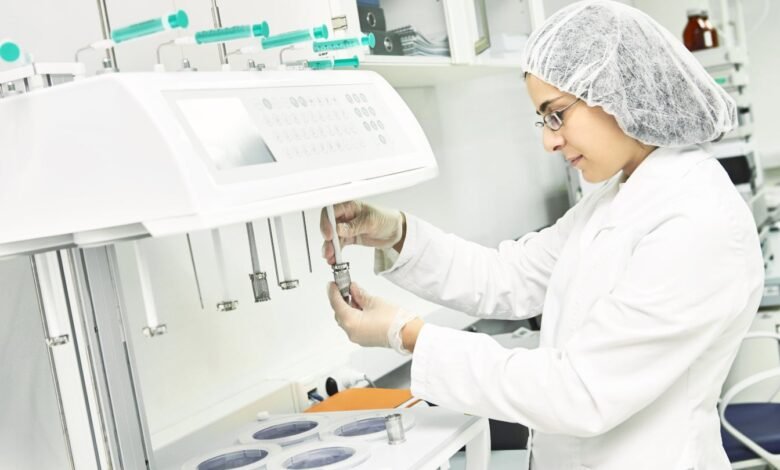Who are the leading innovators in transdermal drug delivery for the pharmaceutical industry?

However, not all innovations are equal and nor do they follow a constant upward trend. Instead, their evolution takes the form of an S-shaped curve that reflects their typical lifecycle from early emergence to accelerating adoption, before finally stabilizing and reaching maturity.
Identifying where a particular innovation is on this journey, especially those that are in the emerging and accelerating stages, is essential for understanding their current level of adoption and the likely future trajectory and impact they will have.
80+ innovations will shape the pharmaceutical industry
According to GlobalData’s Technology Foresights, which plots the S-curve for the pharmaceutical industry using innovation intensity models built on over 668,000 patents, there are 80+ innovation areas that will shape the future of the industry.
Within the emerging innovation stage, engineered multi-specific antibodies, tyrosine kinase inhibitors, and mutant DNA polymerases are disruptive technologies that are in the early stages of application and should be tracked closely. Phenotypic drug screening, antibody-drug conjugates, and polysaccharide-protein conjugate vaccines are some of the accelerating innovation areas, where adoption has been steadily increasing. Among maturing innovation areas are drug delivery nanoparticles and antibody encoding polynucleotide libraries, which are now well established in the industry.
Innovation S-curve for the pharmaceutical industry
Transdermal drug delivery is a key innovation area in the pharmaceutical industry
Transdermal drug delivery is a method of administering medications through the skin into the bloodstream. It offers several advantages over other routes of drug administration, such as oral or intravenous delivery, including controlled release, reduced side effects, and improved patient compliance. Transdermal drug delivery relies on the ability of certain drugs to permeate the skin’s layers and enter the bloodstream. The skin serves as a barrier that prevents many substances from entering the body, but with the right formulation and technology, drugs can be delivered through the skin. Transdermal patches can provide a controlled and sustained release of medication over an extended period, typically 24 hours or more.
GlobalData’s analysis also uncovers the companies at the forefront of each innovation area and assesses the potential reach and impact of their patenting activity across different applications and geographies. According to GlobalData, there are 250+ companies, spanning technology vendors, established pharmaceutical companies, and up-and-coming start-ups engaged in the development and application of transdermal drug delivery.
Key players in transdermal drug delivery – a disruptive innovation in the pharmaceutical industry
‘Application diversity’ measures the number of applications identified for each patent. It broadly splits companies into either ‘niche’ or ‘diversified’ innovators.
‘Geographic reach’ refers to the number of countries each patent is registered in. It reflects the breadth of geographic application intended, ranging from ‘global’ to ‘local’.
Patent volumes related to transdermal drug delivery
Source: GlobalData Patent Analytics
Sorrento Therapeutics is one of the leading patent filers in transdermal drug delivery. Sorrento Therapeutics is a biopharmaceutical company known for its research and development efforts in various areas of medicine, including immunotherapies, antibody-based therapies, and cancer treatments. The Sofusa Lymphatic Delivery System (S-LDS) is a proprietary drug delivery technology developed by Sorrento Therapeutics, designed to deliver injectable medicines directly into the lymphatic and systemic capillaries just beneath the epidermis using microneedles and microfluidics. Hisamitsu Pharmaceutical and Waypoint Capital (Jersey) are some of the other key patent filers in transdermal drug delivery.
In terms of application diversity, Spiral Therapeutics leads the pack, while Endoderma and Broadcom stood in the second and third positions, respectively. By means of geographic reach, Circuit Therapeutics held the top position, followed by Spiral Therapeutics and Ichor Medical Systems.
To further understand the key themes and technologies disrupting the pharmaceutical industry, access GlobalData’s latest thematic research report on Pharmaceutical.
From

The gold standard of business intelligence.
Blending expert knowledge with cutting-edge technology, GlobalData’s unrivalled proprietary data will enable you to decode what’s happening in your market. You can make better informed decisions and gain a future-proof advantage over your competitors.
Source link
#leading #innovators #transdermal #drug #delivery #pharmaceutical #industry
